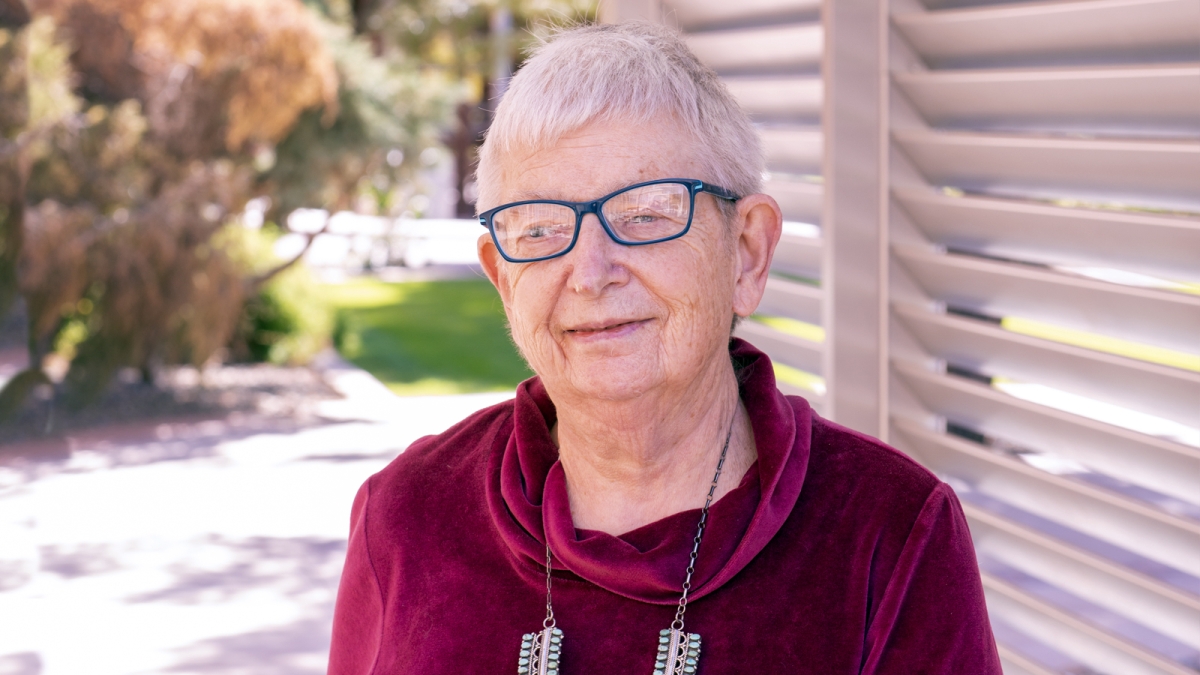ASU professor receives federal funding for technology to grow domestic critical minerals supply chain

Alexandra Navrotsky is the director and mastermind of the Navrotsky Eyring Center for Materials of the Universe, professor in the School of Molecular Sciences and School for Engineering of Matter, Transport and Energy, and affiliated faculty member at the School of Earth and Space Exploration at Arizona State University. Photo by Mary Zhu
The U.S. Department of Energy (DOE) has just announced $39 million in funding for 16 projects across 12 states to develop market-ready technologies that will increase domestic supplies of critical elements required for the clean energy transition. The selected projects, led by universities, national laboratories and the private sector, aim to develop commercially scalable technologies that will enable greater domestic supplies of copper, nickel, lithium, cobalt, rare earth and other critical elements.
One of these projects is “Mining Red Mud Waste for Carbon Dioxide Capture and Storage and Critical Element Recovery," or RMCCS-CER. It is led by Xin Zhang, chemical engineer of Pacific Northwest National Laboratory (PNNL) in Richland, Washington, and has ASU Professor Alexandra Navrotsky and Washington State University Assistant Professor Xiaofeng Guo, a PhD from Navrotsky’s group, as co-PIs.
The funding is part of the ARPA-E Mining Innovations for Negative Emissions Resource Recovery (MINER) program, which aims to develop market-ready technologies that will increase domestic supplies of critical elements required for the clean energy transition.
Red mud is a common industrial waste rich in useful elements, including rare earth elements. Fundamental knowledge is essential to optimize the extraction and separation of rare earths from this potentially valuable resource.
The objective of this project is to use supercritical carbon dioxide to recover critical elements (CEs), especially rare earth elements, from aluminum production wastes (red mud) while also capturing some of the carbon dioxide in stable carbonates. Project success will help lower the carbon footprint of the future economy and will displace the highly toxic acid-leaching process that is currently state of the art.
“We will develop a database and measure thermodynamic properties of rare earth compounds and solutions needed to understand rare earth extraction from red mud,” explained Navrotsky.
The critical role of rare earth elements (REEs) in high-tech industries has created a surge in demand that is quickly outstripping known global supply and has triggered a worldwide scramble to discover new sources. The Biden-Harris administration has remained focused on strengthening the critical materials supply chain as rare earth elements are necessary to manufacture several clean energy technologies — from electric vehicle batteries to wind turbines and solar panels.
President Biden has underscored the importance of deploying energy sources that reduce carbon pollution, lower costs for families and businesses, and ultimately mitigate the impacts of climate change.
Professor Tijana Rajh, director of the School of Molecular Sciences, said, “This is an important project that will directly impact development of scalable technologies for enhancing domestic supplies of critical elements required for the clean energy and future decarbonization of the U.S. economy. These kinds of investment are precisely what we need to try to minimize impacts of climate change.”
Navrotsky is the director and mastermind of the Navrotsky Eyring Center for Materials of the Universe and professor in the School of Molecular Sciences and School for Engineering of Matter, Transport and Energy at Arizona State University.
The Navrotsky Eyring Center for Materials of the Universe unites cosmology, astrophysics, astronomy, planetary science and exploration, and mineralogy and petrology with materials science and engineering, chemistry, physics and biology to address grand questions of the complex chemistries and evolution of planets. The center strives to attract and inspire scientists across all science, technology, engineering and mathematics (STEM) fields to explore alien and extreme conditions and environments with the expectation of discovering new, useful materials and understanding the formation and evolution of planets.
The center also aims to contribute to materials solutions for decarbonization, sustainable and clean energy, and critical materials needed for technologically important applications.
Navrotsky’s many accolades include the Urey Medal from the European Association of Geochemistry, the Roebling Medal from the Mineralogical Society of America, the Harry H. Hess Medal from the American Geophysical Union and the Benjamin Franklin Medal in Earth Science. She is a member of the National Academy of Sciences and the American Philosophical Society and an Alfred P. Sloan Fellow. She has served as vice president and president of the Mineralogical Society of America. In 2020, Navrotsky was ranked No. 25 globally in materials science in "Updated science-wide author database of standardized citation indicators," published in PLOS Biology. She was also made a Distinguished Life Member of the American Ceramic Society and won the European Materials Research Society Jan Czochralski Award in 2021.
Her career has been remarkable, not only for its scholarship, but most significantly for the influence she has had on the earth sciences and the cross-disciplinary efforts she has made to bring together the approaches, tools and philosophy of research in geochemistry, mineralogy, materials sciences and chemistry. She is also known for her devotion to her students and coworkers, the positive research environment she nurtures and her generous spirit. Lastly, Navrotsky has made extremely significant contributions to the education and training of the next generations of scientists, with a special emphasis on underrepresented groups. Scholars that do this effectively are few and far between.
More Science and technology

Google grant creates AI research paths for underserved students
Top tech companies like Google say they are eager to encourage women and members of historically underrepresented groups to…

Cracking the code of online computer science clubs
Experts believe that involvement in college clubs and organizations increases student retention and helps learners build valuable…
Consortium for Science, Policy & Outcomes celebrates 25 years
For Arizona State University's Consortium for Science, Policy & Outcomes (CSPO), recognizing the past is just as important as…